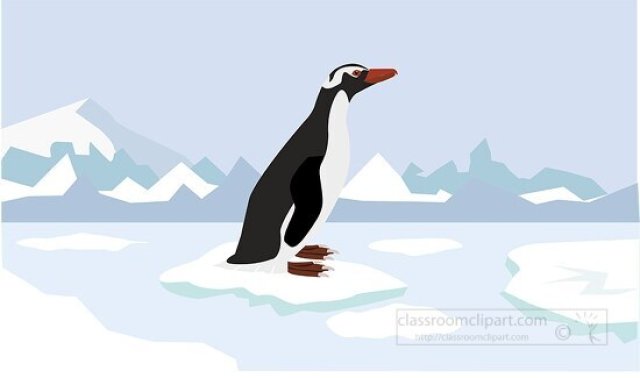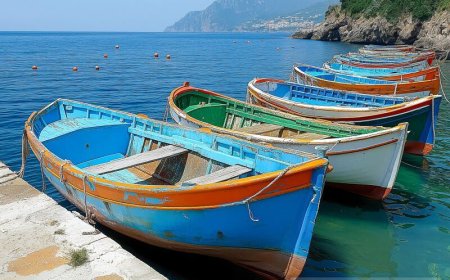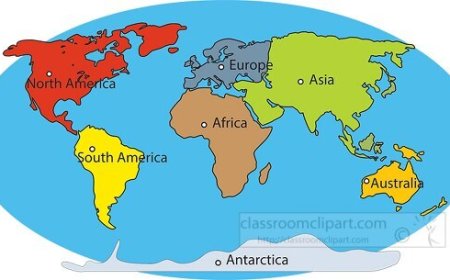Antarctica: Geography, Climate, and Wildlife for Students
Explore Antarctica’s icy landscapes, wildlife, and research stations in this student-friendly article. Learn about Earth's coldest continent.

🧊 Introduction
Antarctica is the coldest, windiest, and driest continent on Earth. Located at the South Pole, it is a land of ice and snow that covers more than 5.4 million square miles. While no one lives there permanently, scientists from around the world travel to Antarctica to study its climate, wildlife, and secrets buried beneath the ice.
Though it may seem empty, Antarctica is full of fascinating discoveries. In this article, you'll learn about its geography, weather, animals, and why protecting Antarctica is important for the entire planet.
🌍 Geography of Antarctica
Antarctica is located entirely in the Southern Hemisphere, surrounded by the Southern Ocean. It is the fifth-largest continent, bigger than Europe and almost double the size of Australia.
More than 98% of the continent is covered by ice, with an average thickness of over a mile. This ice holds about 70% of the world's fresh water! Underneath the ice are mountains, lakes, and even volcanoes.
Important geographic features include:
-
The Antarctic Ice Sheet - the largest single mass of ice on Earth
-
The Transantarctic Mountains - dividing East and West Antarctica
-
Mount Erebus - one of the few active volcanoes in Antarctica
-
Lake Vostok - a hidden freshwater lake buried beneath ice for millions of years
☃️ Climate and Environment
Antarctica has the harshest climate of all the continents. It is a polar desert, receiving very little precipitation, mostly in the form of snow.
-
The coldest temperature ever recorded on Earth was −128.6°F (−89.2°C) at Vostok Station.
-
In the summer, temperatures may rise slightly above freezing near the coast.
-
Winter temperatures can drop below −100°F (−73°C) inland.
-
Strong winds, called katabatic winds, can reach over 200 miles per hour.
Even during the summer months, the continent is mostly frozen. However, global warming has caused some ice to melt, especially around the coastlines.
🗺 Research and Exploration
Antarctica has no permanent human population, but around 1,000-5,000 scientists and support staff live there each year in research stations. These stations are operated by countries like the United States, Russia, Australia, Argentina, and more.
The Antarctic Treaty, signed in 1959 by many countries, ensures that Antarctica is used only for peaceful and scientific purposes. It bans military activity and protects the environment.
Scientists in Antarctica study:
-
Climate change and its effects on glaciers and sea levels
-
Penguin populations and other wildlife
-
Space weather and the ozone layer
-
Fossils and ancient microbes beneath the ice
🐧 Wildlife of Antarctica
Even though it looks lifeless, Antarctica is home to a variety of adapted animals, most of which live in or near the ocean.
Some of the continent's best-known creatures include:
-
Emperor penguins - the largest penguin species, famous for nesting in winter
-
Adélie penguins - smaller penguins that live in huge colonies
-
Seals, such as the Weddell, crabeater, and leopard seal
-
Whales, including the blue whale, the largest animal on Earth
-
Krill - tiny shrimp-like creatures that are a key food source for many marine animals
There are no native land mammals, reptiles, or amphibians. Most animals rely on the ocean for food and spend much of their time in the water or on the ice near the coast.
🧠 Why Antarctica Matters
Antarctica may be far away from where most people live, but it plays a big role in Earth's climate and ecosystems.
-
Its ice helps cool the planet by reflecting sunlight.
-
Its oceans affect global currents and weather patterns.
-
It's a natural laboratory for studying how Earth and life have changed over time.
Scientists also watch Antarctica carefully to understand how melting glaciers could cause sea levels to rise, which would affect people around the world.
📚 Vocabulary List
| Word | Definition |
|---|---|
| Glacier | A large, slow-moving mass of ice |
| Polar desert | A cold region with very little precipitation |
| Research station | A place where scientists live and study the environment |
| Ozone layer | A layer of the atmosphere that protects Earth from harmful rays |
| Antarctic Treaty | An agreement to keep Antarctica peaceful and protected |
| Katabatic wind | A strong, cold wind that flows downhill in Antarctica |
| Krill | Tiny ocean creatures that many Antarctic animals eat |
| Ice sheet | A huge layer of ice that covers land for long periods |
✨ Fun Facts About Antarctica
-
Antarctica has no time zones-most research stations use the time zone of their home country.
-
The South Pole is located on a high, icy plateau about 9,300 feet above sea level.
-
In winter, Antarctica has 24 hours of darkness; in summer, it has 24 hours of daylight!
-
Meteorites found in Antarctica are well-preserved and valuable for space research.
-
The continent is the only place in the world with no native human population.
👧🧒 Kid-Friendly Summary
Antarctica is a land of ice, snow, penguins, and science. It's super cold and has no cities or towns, but scientists go there to learn about the Earth. Penguins waddle on the ice, seals nap in the sun, and whales swim in the ocean nearby. Antarctica may look frozen and empty, but it's full of exciting things to discover!
🧠 Interactive Quiz: How Well Do You Know Antarctica?
1. What is Antarctica mostly covered with?
A) Sand
B) Mountains
C) Ice
D) Forests
2. What bird lives only in Antarctica and nests in winter?
A) Puffin
B) Kiwi
C) Emperor penguin
D) Ostrich
3. What is the name of the international agreement that protects Antarctica?
A) Arctic Law
B) Penguin Pact
C) Antarctic Treaty
D) Polar Promise
4. What kind of wind is common in Antarctica?
A) Hurricane
B) Katabatic wind
C) Trade wind
D) Sea breeze
5. What small ocean creature is food for many animals in Antarctica?
A) Shrimp
B) Krill
C) Squid
D) Tadpole




















































